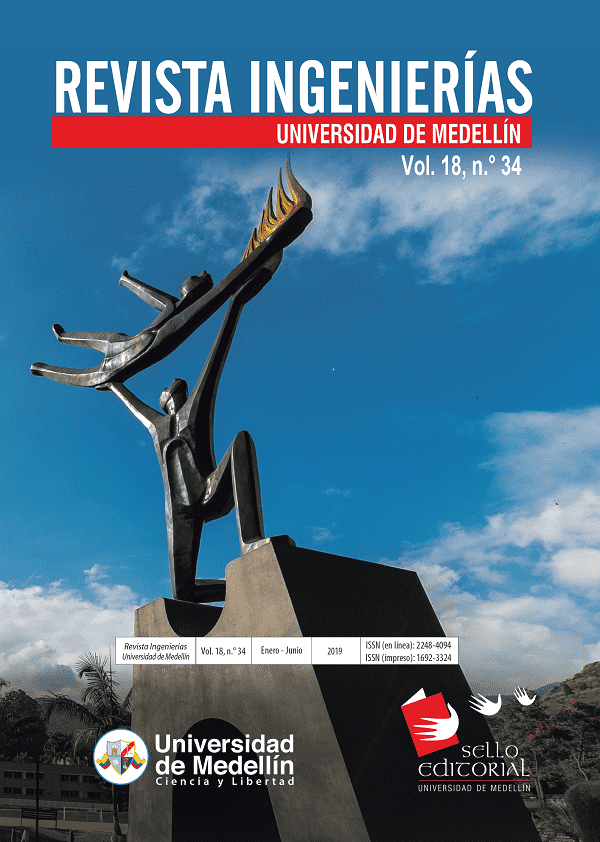Polyethylene terephthalate as a partial replacement for the fine aggregate in concrete mixes
DOI:
https://doi.org/10.22395/rium.v18n34a3Keywords:
polyethylene terephthalate, resistance to compression, fine aggregate, manageability, concrete, replacementAbstract
This research paper, financed by the Eafit University, presents the experimental results in which resistance to compression and manageability of a concrete mix made with a partial replacement for the fine aggregate with polyethylene terephthalate (PET) was assessed. The replacement was made by volume, thus the space occupied by the extracted sand particles will be occupied by the PET. Different concrete mixes with sand replacement were made going from 0 % (reference), 5 %, 10 %, 15 % and 20 %. The results indicate that increasing the replaced sand percentage decreases the resistance to compression, nonetheless, the manageability is not affected by keeping the granulometric curvature of the aggregates. The replacement percentage of 15 % was determined as the more adequate given its appropriate manageability, a great amount of sand is replaced and an acceptable resistance to compression is obtained.
Downloads
References
[1] Departamento Administrativo Nacional de EstadÃstica (DANE), EstadÃsticas de Concreto Premezclado, 2018.
[2] J. McCormac y R. Brown. Diseño de concreto reforzado, 8.a ed., Ciudad de México: Alfaomega, 2011, 724 p.
[3] C. Meyer, “The greening of the concrete industry,†Cement and Concrete Composites, vol. 31, pp. 601-605, 2009.
[4] W. D. Callister. Introducción a la ciencia e ingenierÃa de los materiales, 2.a ed., Ciudad de México: Limusa Wiley, 2009, 834 p.
[5] A. Strong. Plastics: materials and processing, 3.a ed., Nueva Jersey: Pearson Prentice Hall, 2006, 829 p.
[6] M. Frigione, “Recycling of PET bottles as fine aggregate in concrete,†Waste Management, vol. 30, n.° 6, pp. 1101-1106, 2002.
[7] Z.Z Ismail y E.A Al-Hashmi, “Use of waste plastic in concrete mixture as aggregate replacementâ€, Waste Management, vol. 28, n.°11, pp. 2041-2047, 2008.
[8] L.R Bandodkar, et al., “Pulverised PET bottles as partial replacement for sand,†International Journal of Earth Sciences and Engineering, vol. 4, n.° 6, pp. 1009-1012, 2011.
[9] Y.W Choi et al., “Effects of waste PET bottles aggregates on the properties of concrete,†Cement and Concrete Research, vol. 35, n.° 4, pp. 776-781, 2005.
[10] S. Mindess y J.F Young, Concrete, Nueva Jersey: Prentice-Hall, 1981, 671 p.
[11] Asociación Colombiana de IngenierÃa SÃsmica (AIS), Reglamento Colombiano de Construcción Sismo Resistente NSR-10, AIS, 2010.
Downloads
Published
How to Cite
Issue
Section
License
The total or partial reproduction of the contents of the journal for educational, research, or academic purposes is authorized as long as the source is cited. For reproduction for other purposes, express authorization from the Sello Editorial Universidad de MedellÃn is required.

